Tuscany is a land of a great ancient past: in the region there are Etruscan, Roman, and early medieval vestiges, not to mention the Ligurian Apuans of whom the conspicuous heritage of stele statues remains, now preserved in the archaeological museums of the provinces of Massa-Carrara and La Spezia. So there are many museums that can be visited in the region, but what are the places to see for those who want to be outdoors and take a closer look at the excavation sites and vestiges of history directly where they were built? In this article we have prepared an itinerary in Tuscany through ten archaeological areas to learn about the ancient history of this land.
1. Archaeological area of Fiesole
The history of Fiesole (in the province of Florence, a few kilometers away from the capital city, in the hills) begins in Etruscan times, and in the archaeological area, one of the most famous in Tuscany, one can observe the stratifications of the town’s long past: the Etruscan-Roman temple, the Roman theater (one of the most famous in the region), and the baths. Excavations in Fiesole began in the early nineteenth century by Baron Friedman von Schellersheim, but the campaign of archaeological investigations was not systematically initiated until the 1870s, when it was the municipality that resumed excavations and established the first nucleus of today’s Archaeological Museum. The theater, one of the best preserved in Italy, is the only monument in the archaeological area of Fiesole that probably remained visible at all times (it dates from between the 1st century B.C. and the 1st century A.D.), and it is interesting to mention that it is still in use today: in fact, it is the site of the Estate Fiesolana, a program of theatrical and musical events held every year from June through August. In the archaeological area you can also visit the Longobard necropolis, which dates back to the late 6th century: reconstructions of four burials can be seen in the Archaeological Museum of Fiesole. For information on visits, you can go to the Fiesole Museums website.
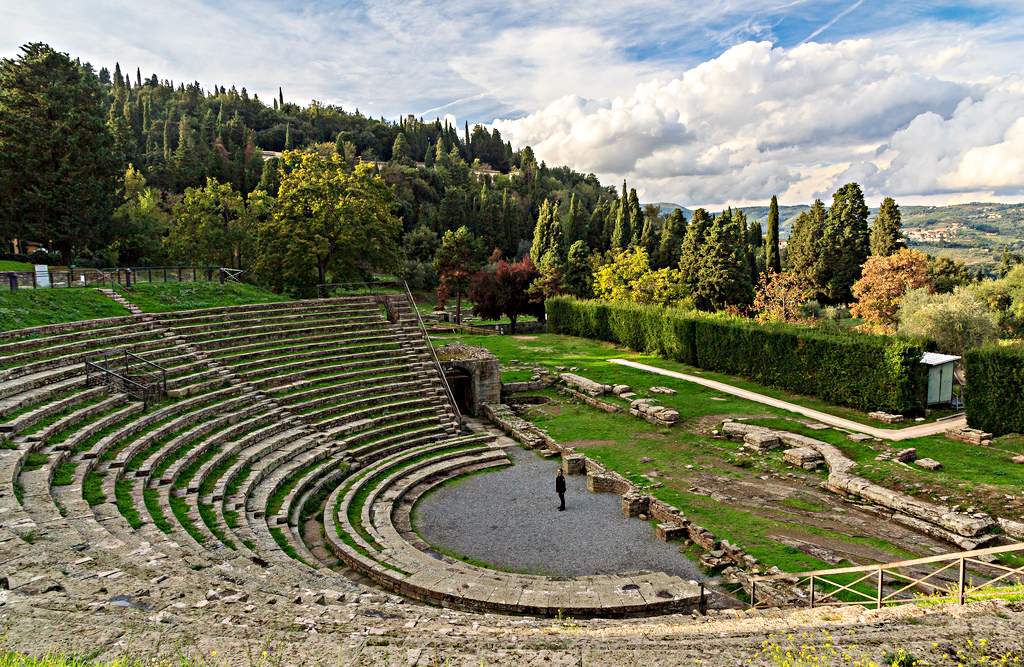 |
| Archaeological area of Fiesole |
2. Archaeological area of Vetulonia
Vetulonia (now in the municipal territory of Castiglione della Pescaia, in the province of Grosseto) is an ancient city whose origins are traced back to the 9th century B.C. It was a thriving Etruscan center of flourishing trade, and the prosperity of this important center of the Etruscan Dodecapolis (the twelve Etruscan city-states, ruled by the lucumon) is known to us from the many finds of goldsmithery and imported objects, as well as interesting local handicrafts. Vetulonia was later conquered by the Romans, of whom it became a municipium, and gradually lost importance. For long centuries traces of Vetulonia were lost, until the first excavations, carried out at the end of the 19th century on the initiative of archaeologist Isidoro Falchi, led to the discovery of the city. Today, the history of Vetulonia is told to us mainly by the numerous funerary testimonies, which start from the 9th century B.C. and culminate with the monumental tombs (to see, the Belvedere Tomb, the Diavolino Tomb, the Pietrera Tomb), the most obvious traces of the magnificence of the ancient city. To find out how and when to visit the archaeological area of Vetulonia, you need to go to the Maremma Museums website.
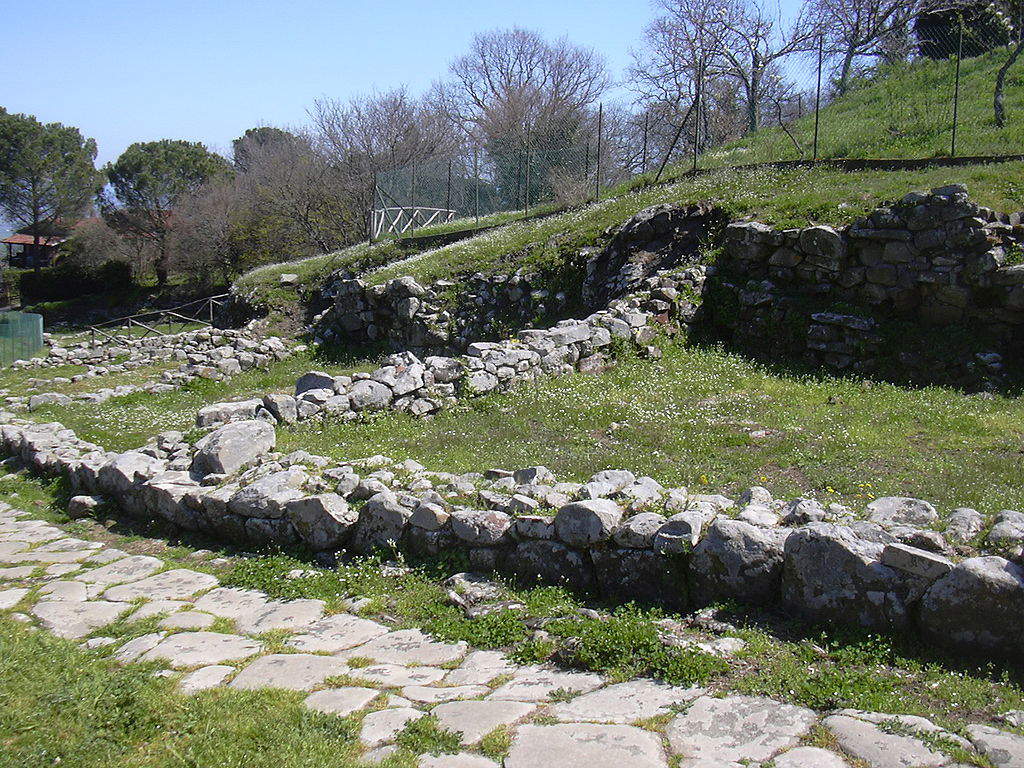 |
| Archaeological area of Vetulonia. Ph. Credit Gabriele Delhey |
3. Roselle Archaeological Area
A few kilometers from Grosseto, this is one of the most famous and visited archaeological areas in Tuscany: here it is possible to observe the remains of the ancient Etruscan city of Rusel (which later became the Rusealle of the Romans), opposite Vetulonia, since the two cities were located on opposite shores of Lake Prile. Like Vetulonia, it was one of the cities of the Etruscan Dodecapolis: founded in the seventh century B.C., Roselle was a relevant communications hub and commercial center that, passing through the Roman conquest (which dates from 294 B.C., and was bloody: it is recounted by Livy in his Ab urbe condita, which tells of the devastation of the conquered city by the consul Lucius Postumius Megellus and the reduction to captivity and the killing of hundreds of its inhabitants), survived until much of the Middle Ages, so much so that it became a diocesan see (later transferred in 1138 to Grosseto). Today, the Etruscan walls, part of the Roman amphitheater, the ruins of a bath complex, the splendid mosaics of the so-called “mosaic domus,” and the remains of the early Christian basilica survive. The site is managed by the Polo Museale della Toscana: to visit it, it is necessary to consult the pole’s website.
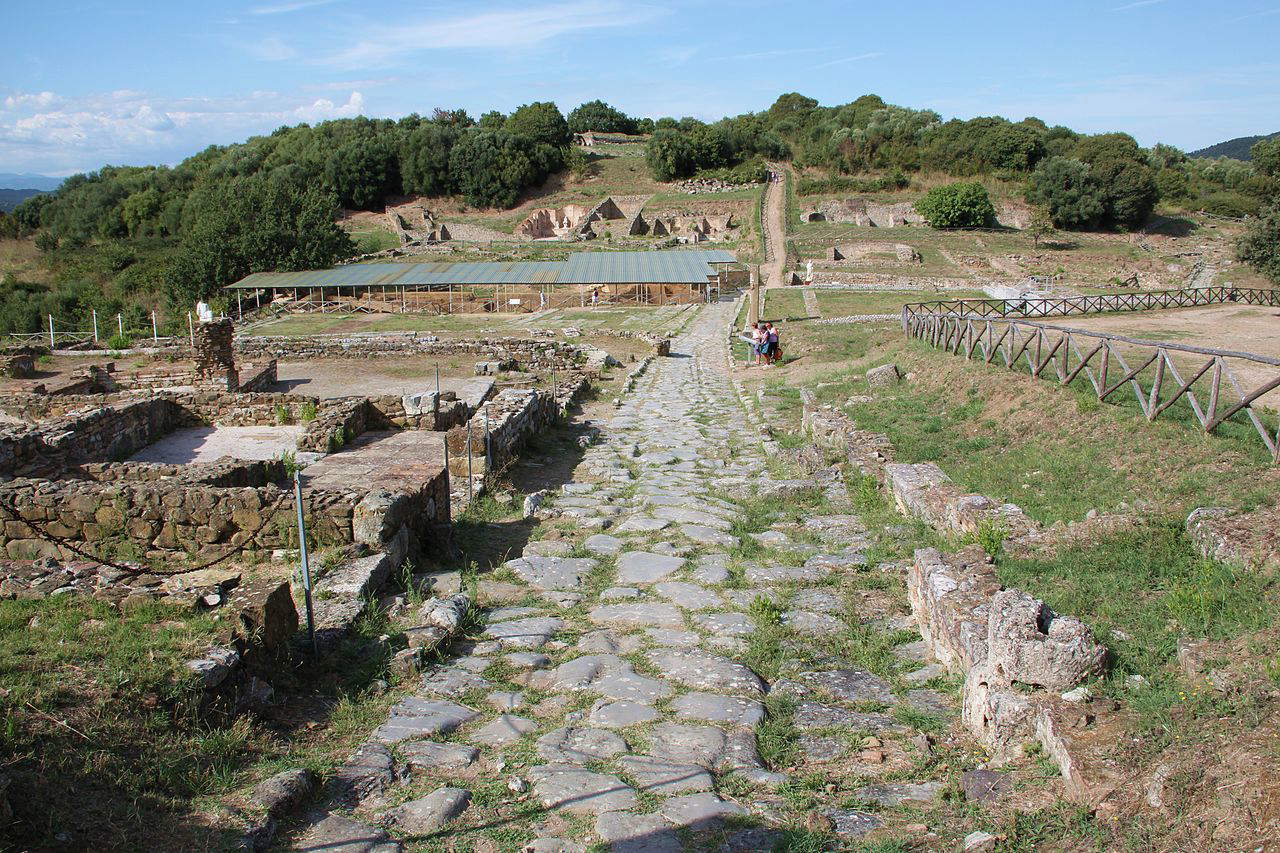 |
| Roselle Archaeological Area |
4. “La Rocca” Archaeological Park in Santa Maria a Monte.
This is one of the most recent archaeological parks: in fact, it was opened in 2013 after 30 years of excavations coordinated by the University of Pisa and the University of L’Aquila, and is located on the summit of the village of Santa Maria a Monte, in the province of Pisa. Here lies the oldest nucleus of the village, dating back to Etruscan times, beginning in the fifth century B.C.: where the highest part of the village is today, there was once a rather prosperous village, as revealed by the findings. The site was variously inhabited from Etruscan times until the Middle Ages and then was incorporated into the present village: seeing archaeological evidence of this value within a medieval village is not an uncommon occurrence in Tuscany (just think of Volterra), and the uniqueness of Santa Maria a Monte lies in the sum of the stratifications that have left their traces in the park. Thus, one can find Etruscan evidence, remains of Roman buildings, but also Longobard (a rectangular hall oratory) and Carolingian constructions. Worth seeing are the area of the smelting furnaces (where, in Lombard times, metal was melted down for the production of bells), the crypt, and the cistern. For more information on visiting times and methods, the reference site is that of the Municipality of Santa Maria a Monte.
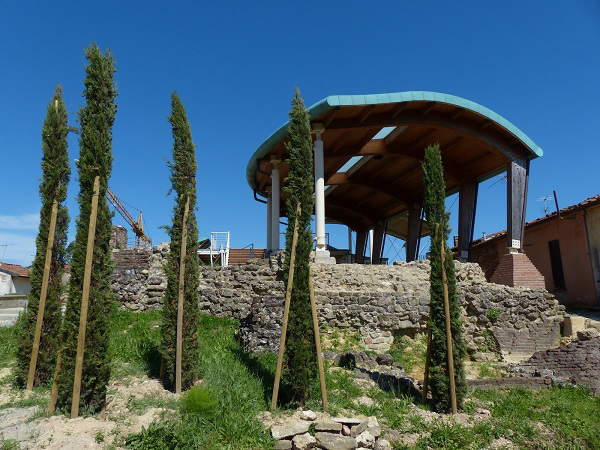 |
| La Rocca di Santa Maria a Monte Archaeological Park |
5. Poggibonsi Archaeological Park
It is located in Poggibonsi (in the province of Siena), on the top of the hill known as “Poggio Imperiale,” which is right above the town.Excavations carried out by archaeologists show that the oldest inhabited nucleus of the town was located here, with evidence dating back to the fifth or sixth century BC. However, the excavations, conducted between 1993 and 2007 by the University of Siena, have mainly brought to light traces of the medieval settlement, dating from various eras, from the Lombard to the 12th century: there are thus traces of dwellings, a curtis (“court,” a kind of farm) from the Frankish period (9th-10th centuries), remains of buildings from the 12th century, the time of the foundation of “Podium Bonizi,” a castle located along the route of the Via Francigena. The visit culminates with the Fortress of Poggio Imperiale, built at the time of Lorenzo the Magnificent and partly still preserved: the building towers over the town. Poggibonsi is also home to the Archeodrome: a 1:1 scale reconstruction of the Frankish-era village, home to workshops and re-enactments that allow visitors to “experience the Middle Ages,” as the Park’s slogan states. And also in the Park is the Museum-Documentation Center, which tells the story of the site. For all information you can visit the Poggibonsi Archaeological Park website.
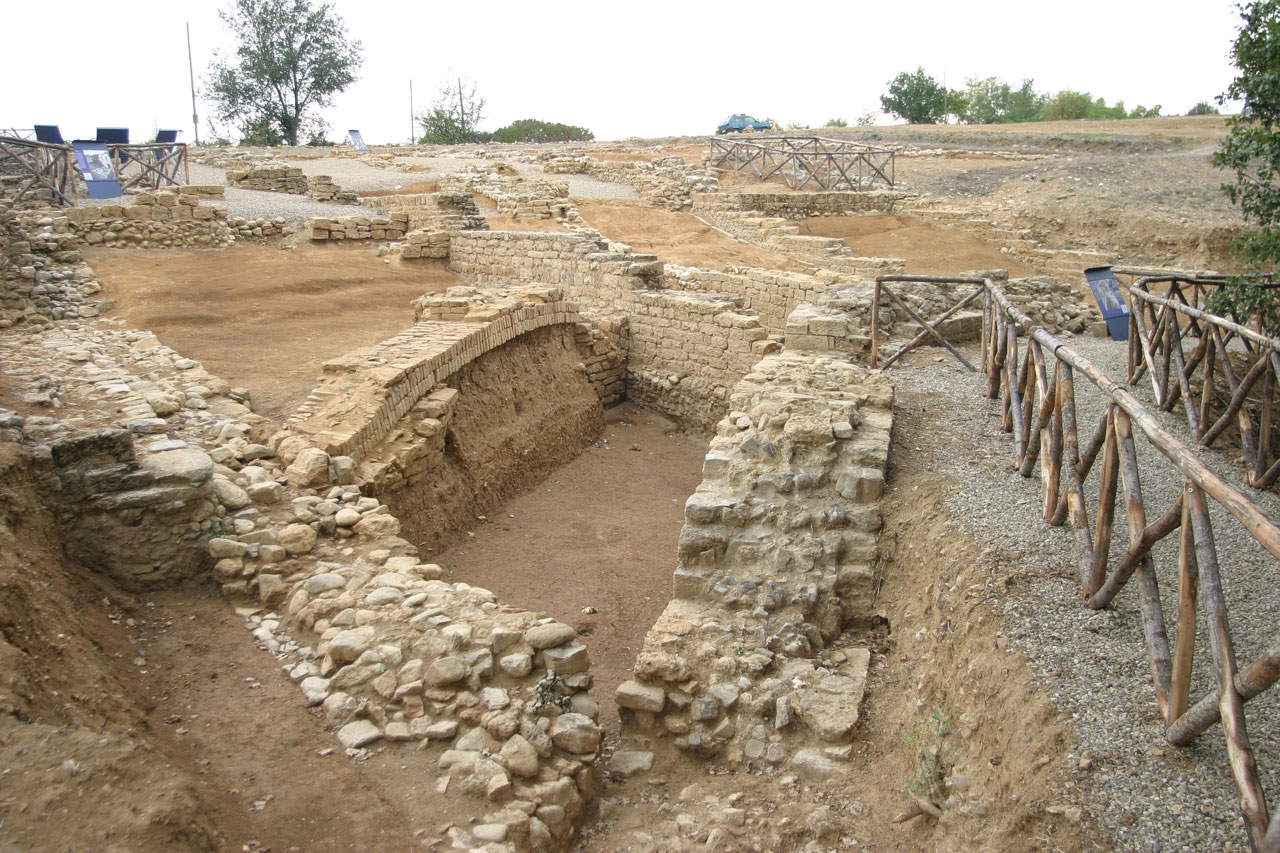 |
| Poggibonsi Archaeological Park |
6.Archaeological Park of Baratti and Populonia
The Archaeological Park of Baratti and Populonia, in the municipality of Piombino (province of Livorno), is known not only for its history, but also for its beautiful landscape setting. It was opened in 1998 and is part of the Val di Cornia Parks: it is also worth visiting because Populonia is the only known case of an Etruscan city built directly on the shores of the sea. The ancient city(Fufluna or Pupluna) was one of the twelve of the Etruscan Dodecapolis and reached its period of maximum splendor in the 6th century B.C. It was an important city with thousands of inhabitants, defended by walls, that flourished thanks to the iron industry, as testified by the numerous findings that attest to an intense activity in this sector (consider that Scipio l’Africano, for the victorious war in Africa, supplied his army with weapons using iron from Populonia). Having entered the orbit of the Romans, Populonia declined from the 1st century B.C. onward, only to be destroyed by the Lombards in 570 and sacked in 809 by Saracen pirates: at that time, the village already had few inhabitants. The grandeur of the ancient city is evidenced by the acropolis, the place where the religious and civic life of the community was concentrated. In the lower part, on the other hand, it is possible to visit the Etruscan necropolis and the ancient industrial zone, where there are traces of the structures where iron was worked. A visit to the medieval village is also not to be disdained: Populonia, in fact, although almost completely uninhabited during the early Middle Ages, flourished again in the 15th century, when the village, which was part of the principality of Piombino, was rebuilt and equipped with fortifications by the Appiani, lords of the Tuscan town. To visit the Baratti and Populonia Archaeological Park, one must go to the Val di Cornia Parks website.
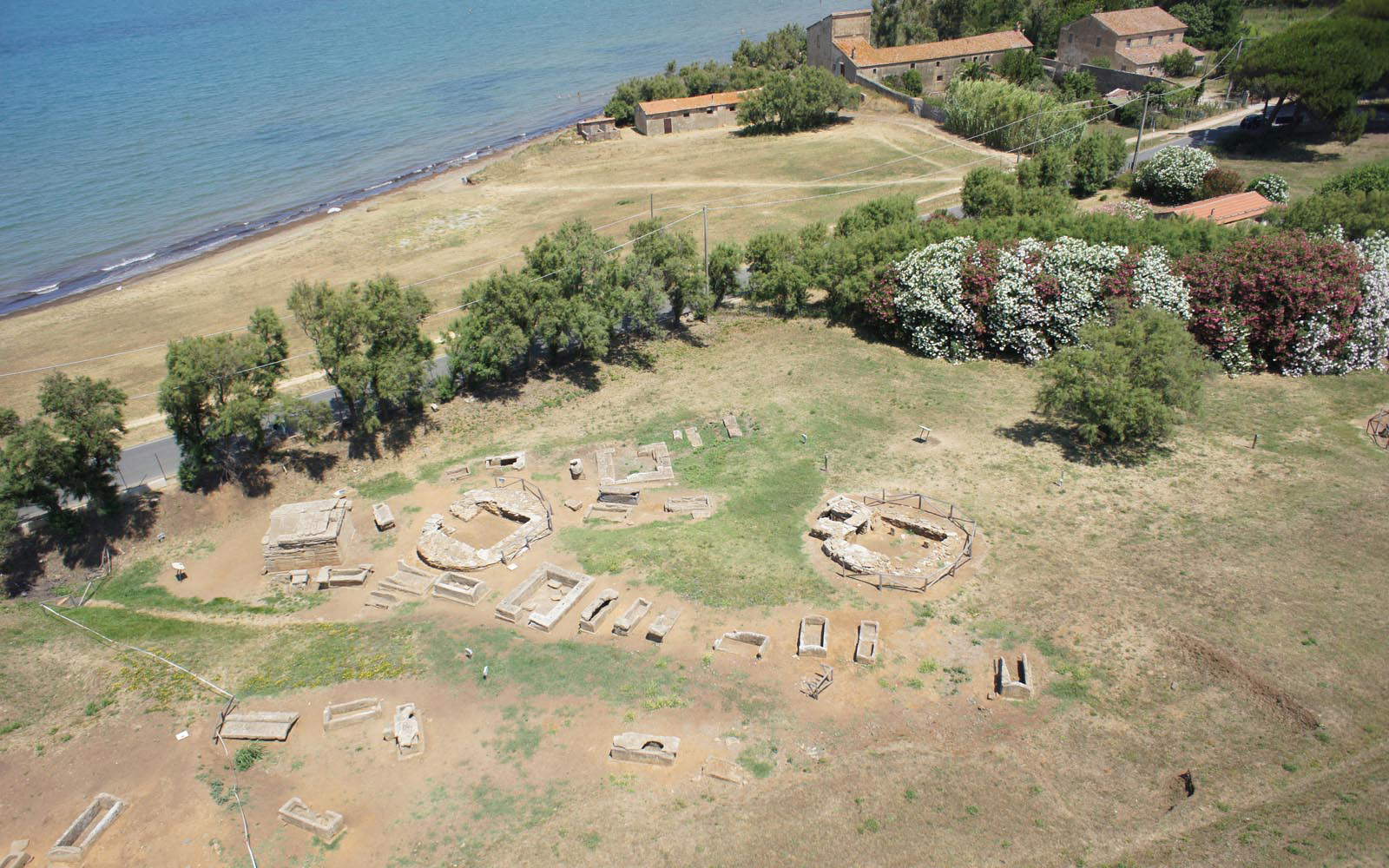 |
| Baratti and Populonia Archaeological Park |
7. Archaeological Park of the City of Cortona
The town of Cortona (in the province of Arezzo) is best known for its medieval and renaissance past, being a very picturesque village, rich in extraordinary works of art (just think of those by Luca Signorelli or Beato Angelico preserved at the local Diocesan Museum), Etruscan artifacts (which can be found at the Museum of the Etruscan Academy and the City of Cortona, the MAEC), is “set” of numerous films. Less well known, on the other hand, is the context of numerous archaeological testimonies scattered throughout the territory within which Cortona is located: even just by climbing up to the city one realizes how rich the area is in archaeological sites, so much so that all of these places have been united under a single “flag,” that of the Archaeological Park of the City of Cortona, composed of several routes that take visitors to discover Etruscan and Roman Cortona. Thus, it will be possible to visit the Etruscan walls, the Roman cisterns, the very particular and sumptuous Etruscan tombs known as “melons” because of their shape, and then again the Roman villa of Ossaia (from which mosaics preserved at the MAEC come), the archaeological area of Sodo. To learn about the park and its routes, just visit the website of the Archaeological Park of the City of Cortona.
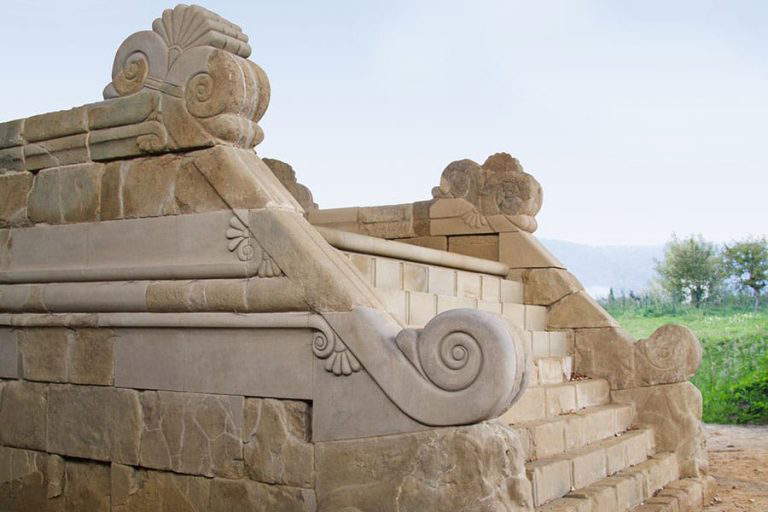 |
| The altar of the Sodo tumulus in the Archaeological Park of the City of Cortona |
8. “Città del Tufo” Archaeological Park in Sorano
The Archaeological Park “Città del Tufo” in Sorano (province of Grosseto) includes several archaeological sites of considerable importance and from different periods: the best known are the Vie Cave of Sovana, also known as Cavoni (a road system from Etruscan times that ran between the walls of the tuff rocks in an area between present-day Sovana, Sorano and Pitigliano, and that was also used in Roman times and until the Middle Ages), the imposing necropolis of Sovana (also from Etruscan times), and the medieval rock sites of San Rocco and Vitozza: in the latter, inhabited until the time of the Lorraines and finally abandoned in the late 1700s, are remains of a castle that was once the possession of the Orsini family. Some of the necropolises are connected by the Vie Cave: walking among these high rock walls is an experience that cannot be repeated at other sites. To learn all about Sorano’s “Città di Tufo” Archaeological Park and its sites and to prepare a visit, you can go to the park’s official website.
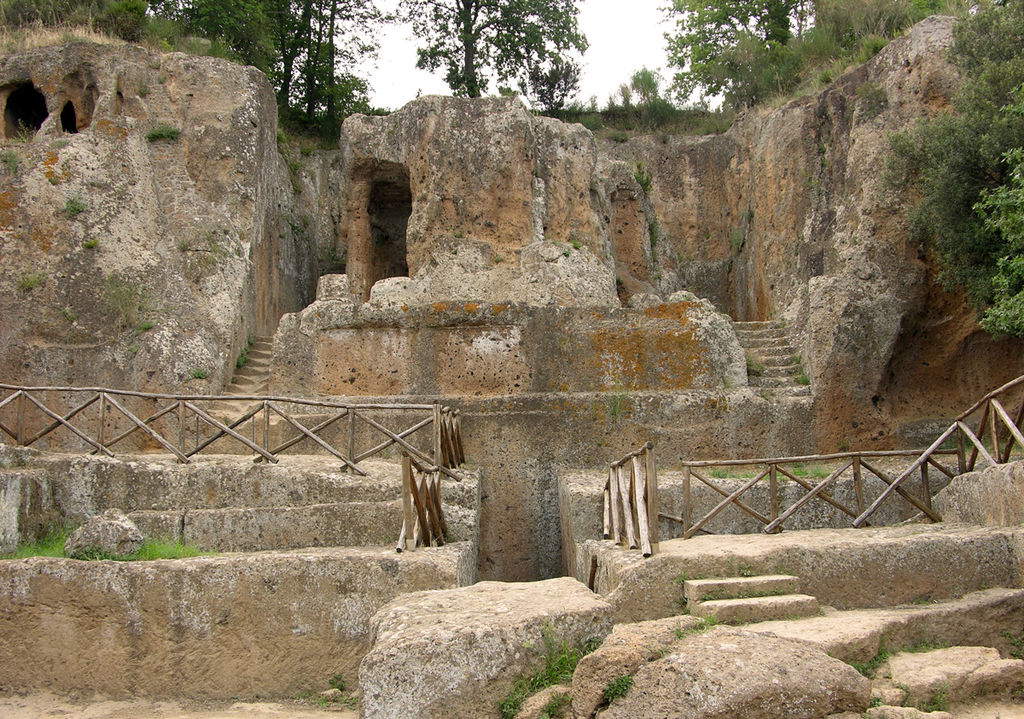 |
| The Ildebranda Tomb in the “Città del Tufo” Archaeological Park |
9. Accesa Lake Archaeological Park
The small Lago dell’Accesa in the Tuscan Maremma (an area of 14 hectares, but a very fascinating place for the local people) was the site of an ancient Etruscan settlement, located 9 kilometers from Massa Marittima (in the province of Grosseto), in whose municipal territory the archaeological park is located. The ancient Etruscan village dates back to the 7th-6th centuries B.C., but the settlement may date back to the 9th century.The center (whose Etruscan name we do not know), which was first excavated between the 1920s and 1930s on the initiative of archaeologist Doro Levi, was probably linked to the nearby town of Vetulonia. It was not until the 1980s, with the investigations and excavations of the University of Florence, led by the noted Etruscologist Giovannangelo Camporeale, that the vastness of the settlement was realized, of which five quarters (named with the first five letters of the alphabet) arranged along the shores of the lake, and several necropolises were found. To visit the site, set in an important naturalistic context, you can inquire on the Maremma Museums website.
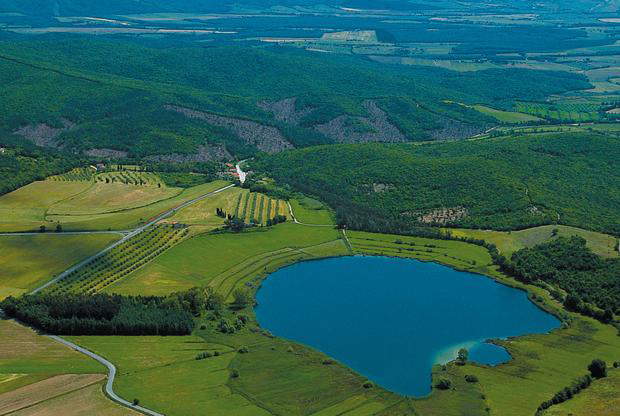 |
| The Lake of Accesa |
10.Archaeological Area of Cosa
Cosa, near present-day Orbetello (province of Grosseto) was located on the top of a promontory 114 meters above sea level: it was a Roman colony founded to control the coast after the conquest of the cities of Volsinii and Vulci in 280 BC. It continued to play its role (essentially strategic, but also had maritime trade, as it was a landing place) until the late imperial age, but from the fourth century AD it was gradually abandoned. Today, what remains of Thing are the remains of the walls, the forum with traces of the basilica and with the ruins of the curia and comitium complex, the seats of the city’s administrative life, the temple of Concordia, the temple of Mater Matuta, numerous domus (beginning with the house of Diana and the house of the Treasury) and other important vestiges. In 1981, the National Archaeological Museum of Cosa was opened within the archaeological area, the result of a collaboration between the state and the American Academy in Rome, which began excavations in the 1940s. For information about the site, it is possible to visit the website of the Polo Museale della Toscana, which is entrusted with its management.
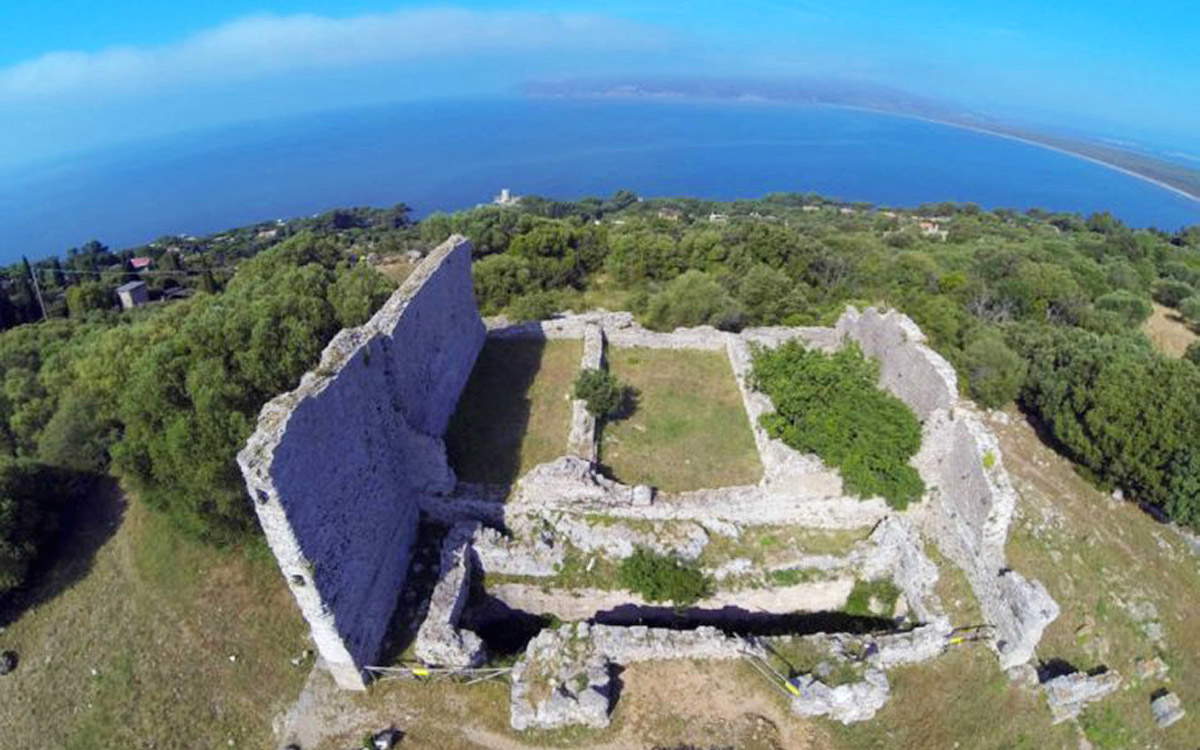 |
| Archaeological Area of Cosa |
 |
| Ten archaeological sites to see in Tuscany, including Etruscans, Romans and the early Middle Ages |
Warning: the translation into English of the original Italian article was created using automatic tools. We undertake to review all articles, but we do not guarantee the total absence of inaccuracies in the translation due to the program. You can find the original by clicking on the ITA button. If you find any mistake,please contact us.